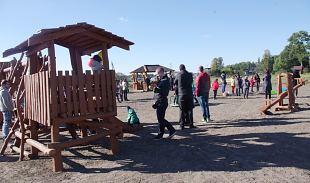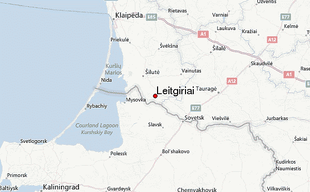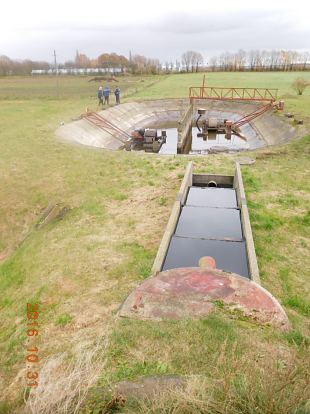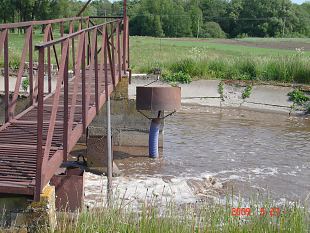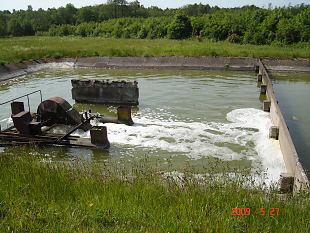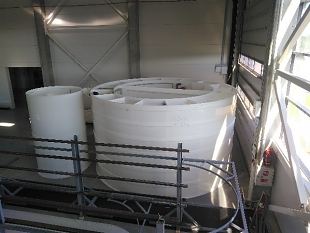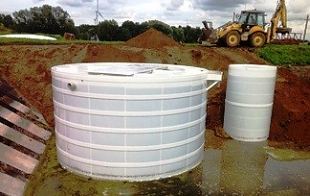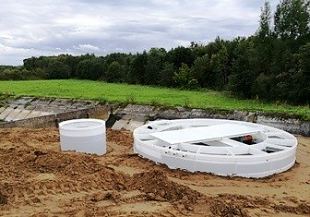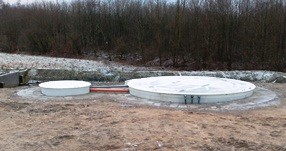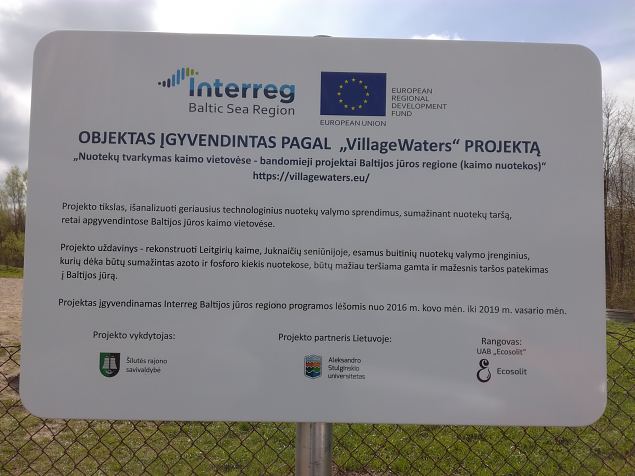 Lithuania, Leitgiriai Silute (Šilutė) district municipality (area – 1706 km², population – 52 960) is situated in the western part of the Republic of Lithuania and in the southern part of Klaipėda county, near the Curonian (Kuršių) Lagoon. The project was funded by the Interreg Baltic Sea Region Programme 2014-2020 Lithuania, Leitgiriai
Lithuania, Leitgiriai Silute (Šilutė) district municipality (area – 1706 km², population – 52 960) is situated in the western part of the Republic of Lithuania and in the southern part of Klaipėda county, near the Curonian (Kuršių) Lagoon. The project was funded by the Interreg Baltic Sea Region Programme 2014-2020 Lithuania, Leitgiriai Cleaner water
in your village and aroundLithuania, Leitgiriai
Silute (Šilutė) district municipality (area – 1706 km², population – 52 960) is situated in the western part of the Republic of Lithuania and in the southern part of Klaipėda county, near the Curonian (Kuršių) Lagoon.
The Curonian Spit separates it from the Baltic Sea. The municipality borders on the Kaliningrad region (Russian Federation). eitgiriai is a village with 104 inhabitants (40 households) in the district of Silute.
| ||
A regional park and protected areas are located in the territory surrounding Leitgiriai. Here are the origins of a very beautiful, small river, Leite. Leite is a right tributary of Rusne River (a branch of the Nemunas River). The quality of Leite River and other surface water bodies is very important for the Leitgiriai community.
| ||
Leitgiriai’s wastewater treatment plant (WWTP) is being selected because it uses a typical biological treatment technology (the main treatment facility of which – periodical operation ditch with aeration). Technological facilities of such type are used in another four villages located in the territory of the coastal area: Girkaliai and Lapiai (Klaipeda district), Kaltinenai (Silale district), Pilsudai (Taurage district). In Lithuania, these facilities number about 20.
Leitgiriai WWTP was built in 1991. It consists of a grit chamber, a periodic operation ditch and pond – both with mechanical aeration, and a settling pond. | ||
Renovation of the pre-treatment step; equalization tank The existing pre-treatment step was morally and technologically outdated and physically damaged from the log years of use. Old installations were dismantled and new hand skimmed screen for screenings and a sand/grit separator were installed. Also a pumping station was designed for distributing wastewater flow during the wet periods when the inflow increases drastically. In these specific circumstances part of the wastewater is directed into the old reactor which is reconstructed into an equalization tank. After the excessive inflow is over the accumulated wastewater is returned to the treatment process.
| ||||
Description of the treatment process The anaerobic and anoxic chambers are divided by a series of overflowed and under flowed baffles into compartments. The inflow of wastewater and circulation of the active sludge as well as the particular arrangement of the baffles (patented Vertical Flow Labyrinth system) creates an upward and downward flow in the compartments, which ensures an effective mixing of the content in each compartment. In these chambers nitrogen and phosphorus removal takes place. | ||
The activated sludge-wastewater mixture from the anoxic chamber flows to the aeration chamber. At the bottom of the aeration chamber air diffusers are installed. The diffusers provide fine-bubble aeration ensuring the content is in suspension and the amount of oxygen necessary for biological processes is dissolved, perforated elastic membrane is used in the air diffusers, which allow a long-term operation. | ||
The tanks of the biological reactors are designed to be installed partly below ground. The tanks of the WWTP are placed on a compacted gravel filling, on which is placed a reinforced concrete basement. The thickness of the gravel filling and reinforced concrete basement, as well as the type of concrete and way of re-enforcement are designed based on the local foundation circumstances. The tank of the biological reactor should be backfilled with sorted material, for example with coarse sand. An embankment with a necessary slope around the tank should be made. The width of the top of the embankment should allow a free walkway around the tanks. | ||
After all the construction and installation works are done the startup of the WWTP can be commenced. Startup is conducted by AUGUST IR KO specialists. The plants are set to work by bringing the activated sludge from already running biological wastewater treatment plants (best to take already mature sludge from AUGUST IR KO units). The aeration and sludge circulations systems are adjusted for optimal performance according to the actual conditions (inflow, contamination load). Treatment process starts immediately after the start up and reaches its optimal efficiency shortly. So the environmental effect during the startup is minimal. | ||
VillageWaters Project
VillageWaters suggest most effective wastewater treatment solutions in scattered dwellings households, which use their own, independently operated water purification systems.
Helping Homeowners
Environmentally oriented families and homeowners, who live in scattered dwellings areas, where connecting to larger wastewater plants is not option because rural distances.
Project publications
Information Tool, article base and blog will be linked directly to our website.
See also our Facebook pages

Communication
SYKLI Environmental School of Finland
PL 72, 11101 Riihimäki, Finland
Jari Heiskanen (Chief Web Manager),
phone. +358 50 375 2657,
jari.heiskanen@sykli.fi
